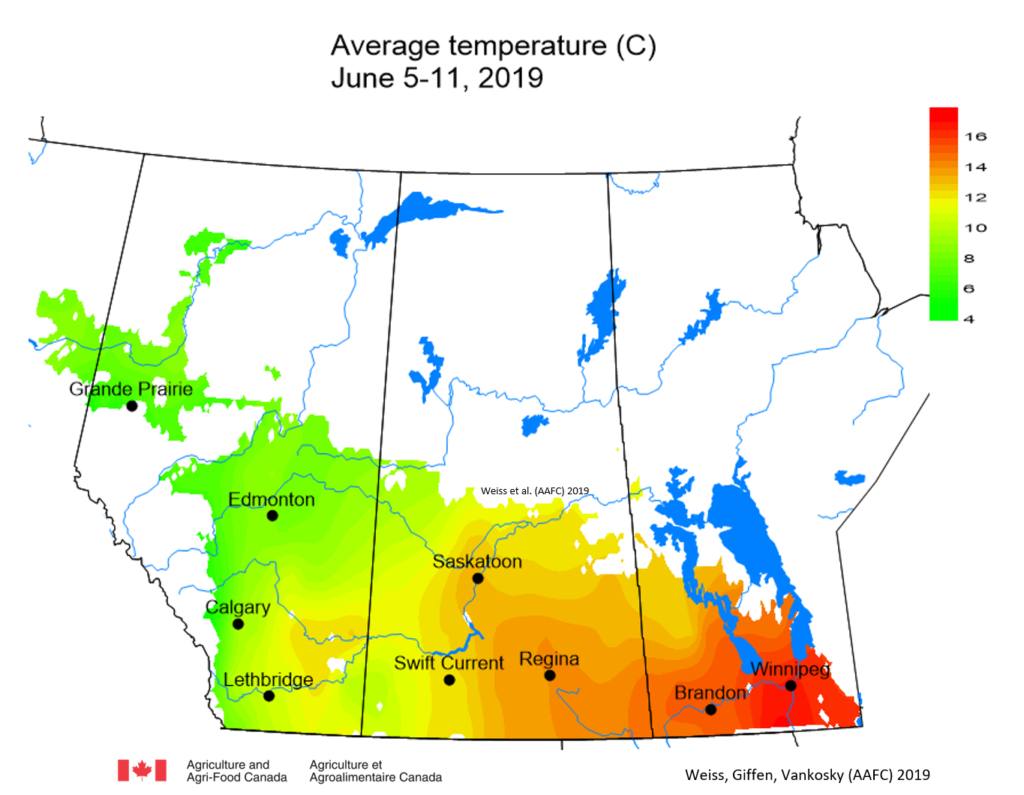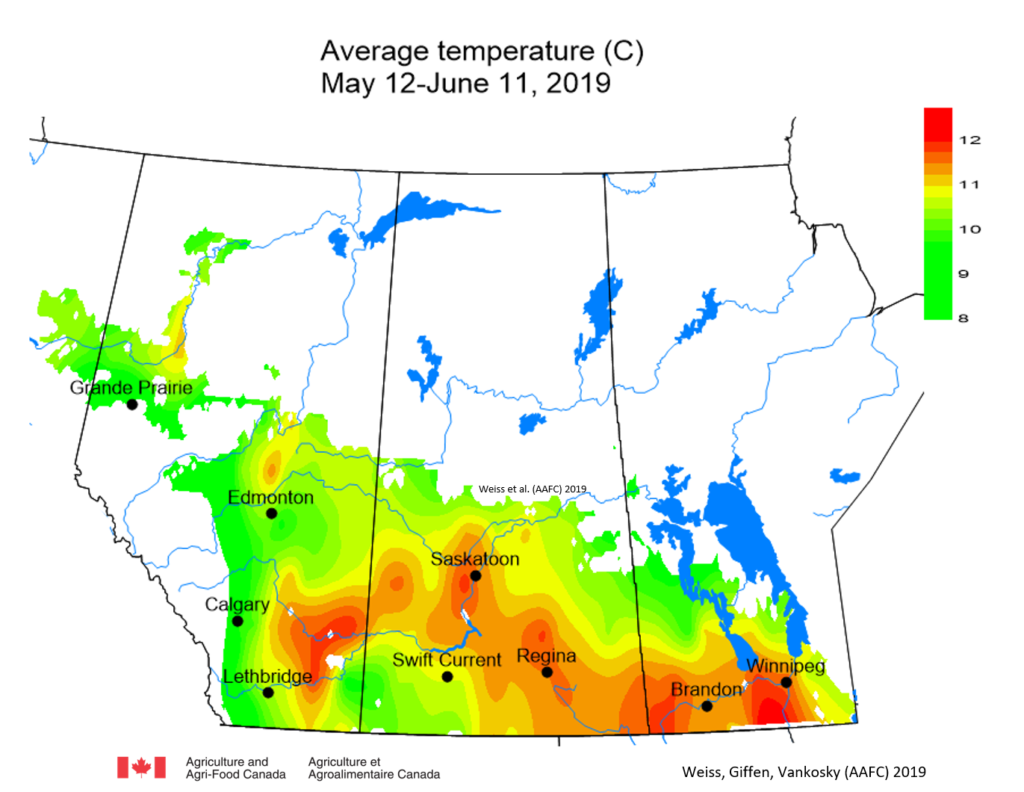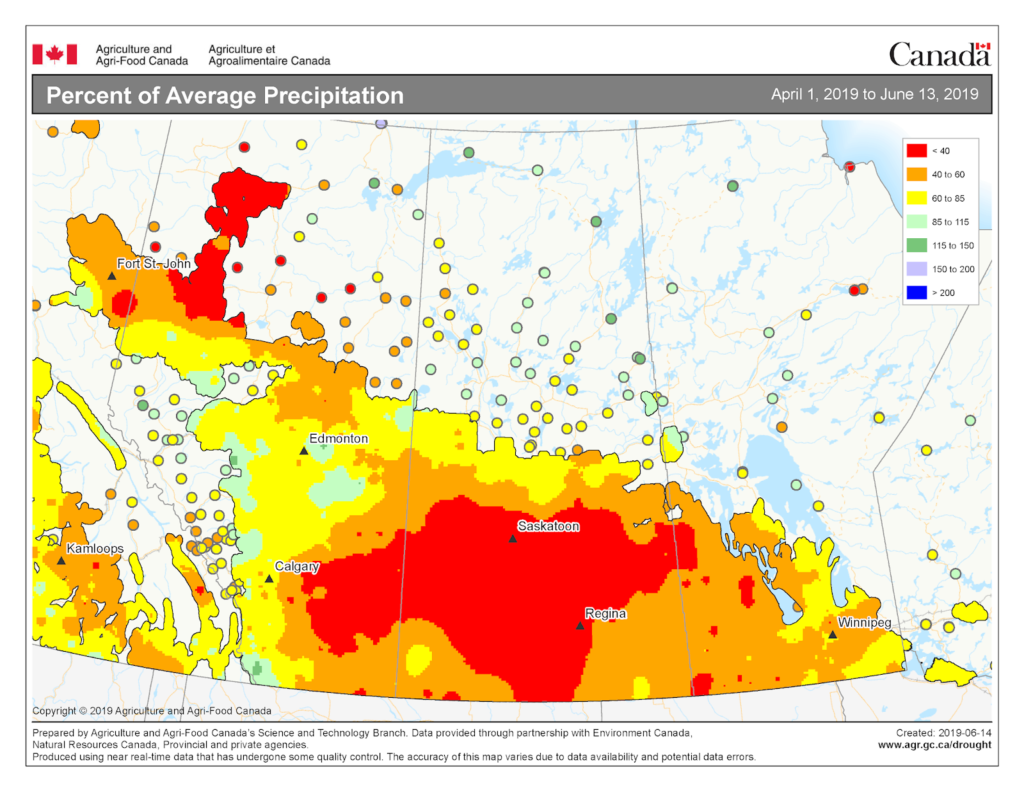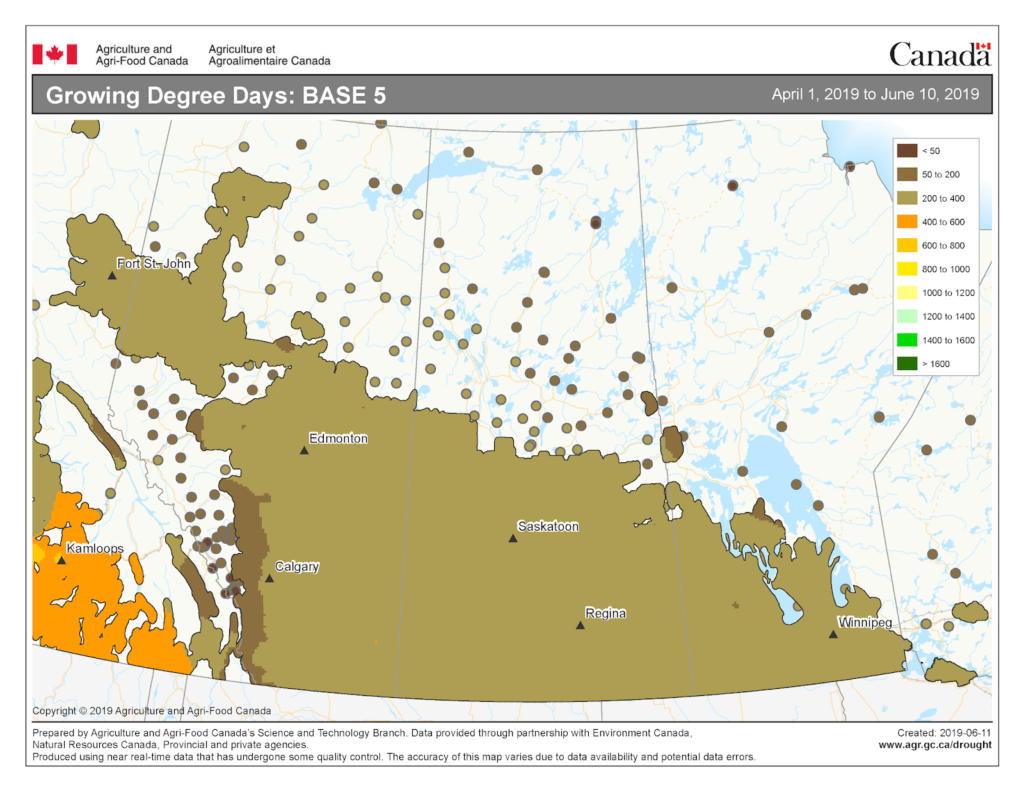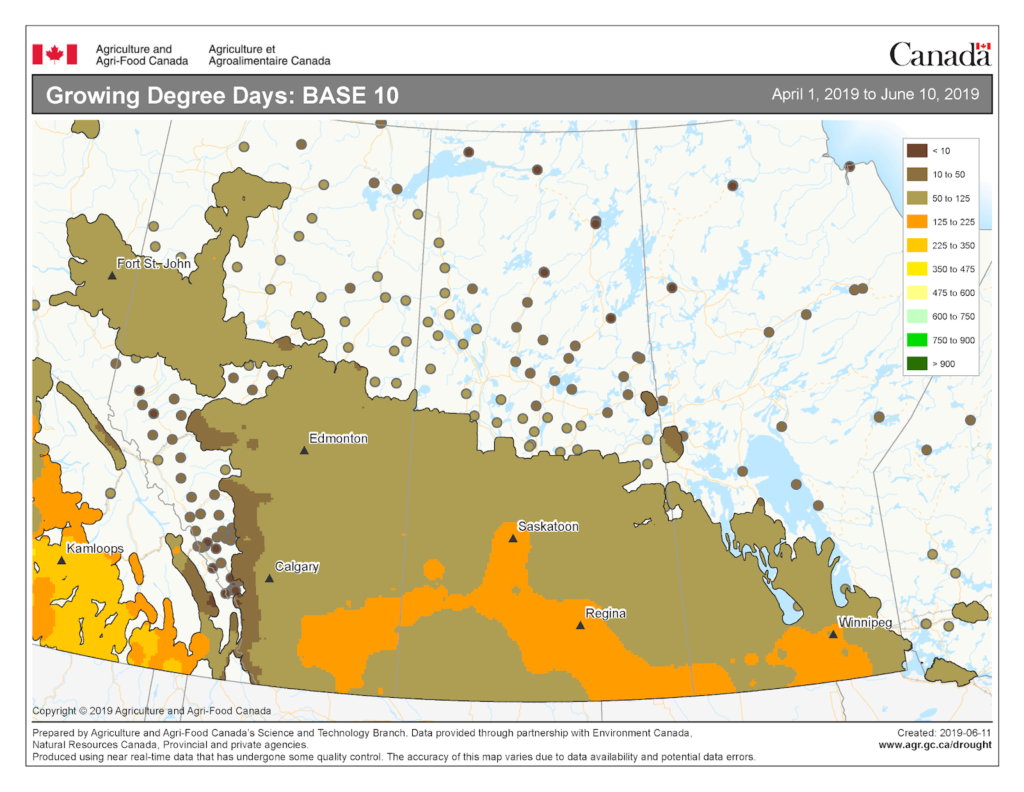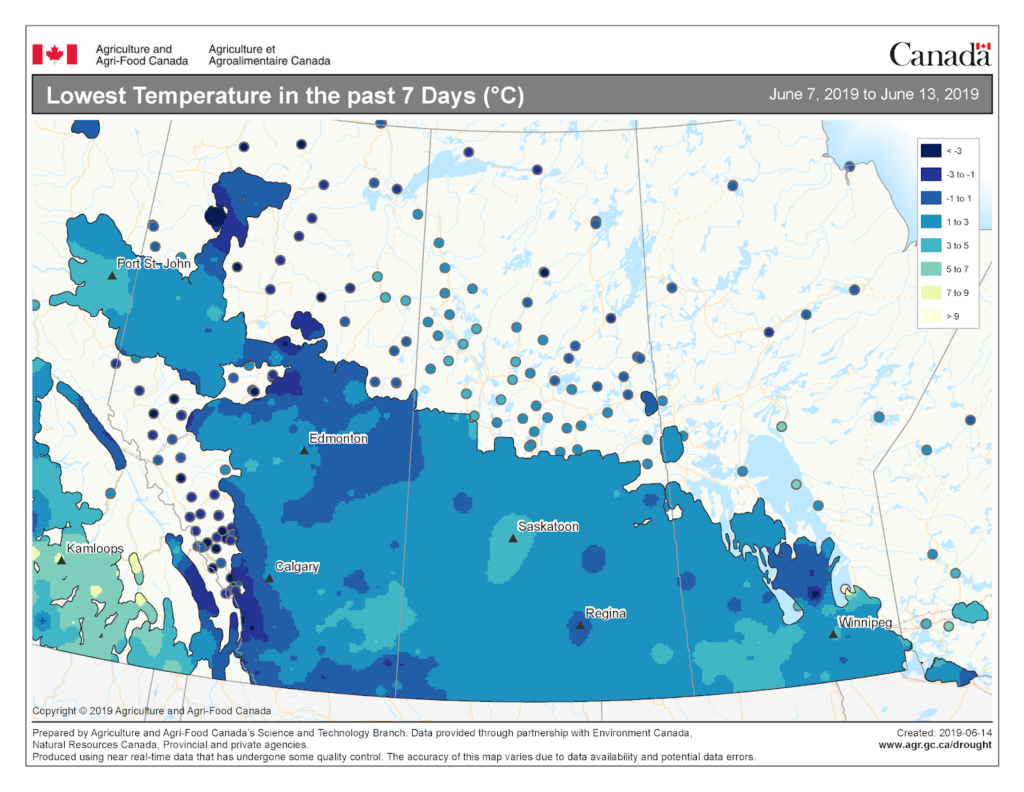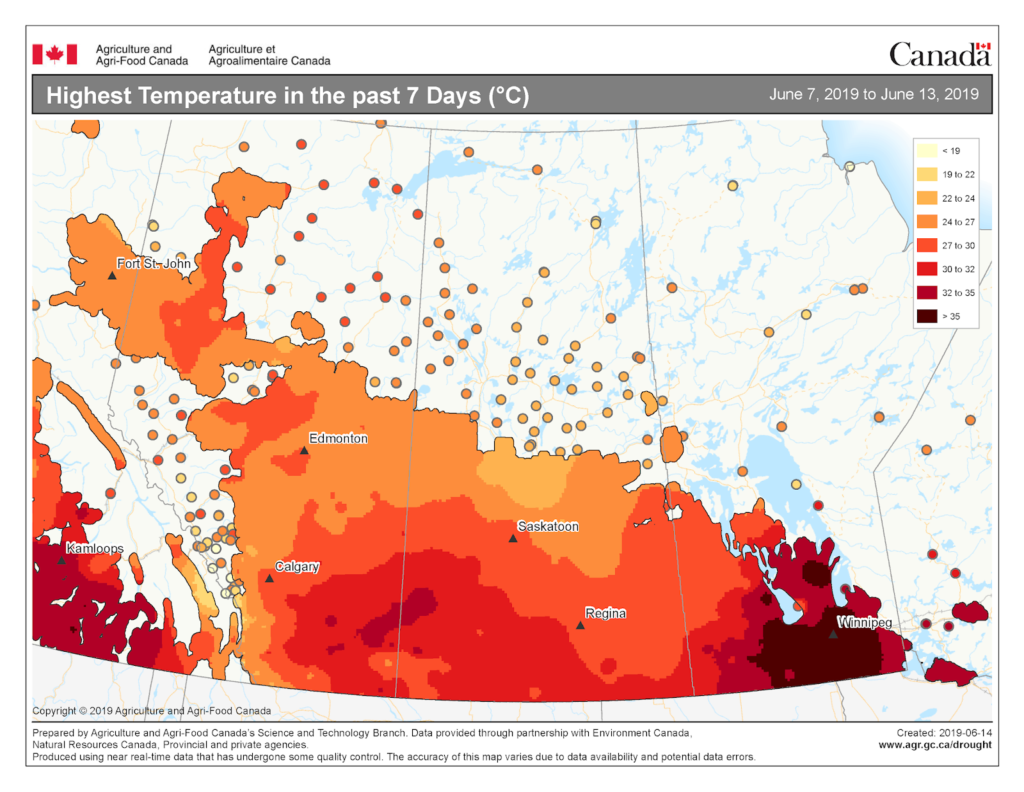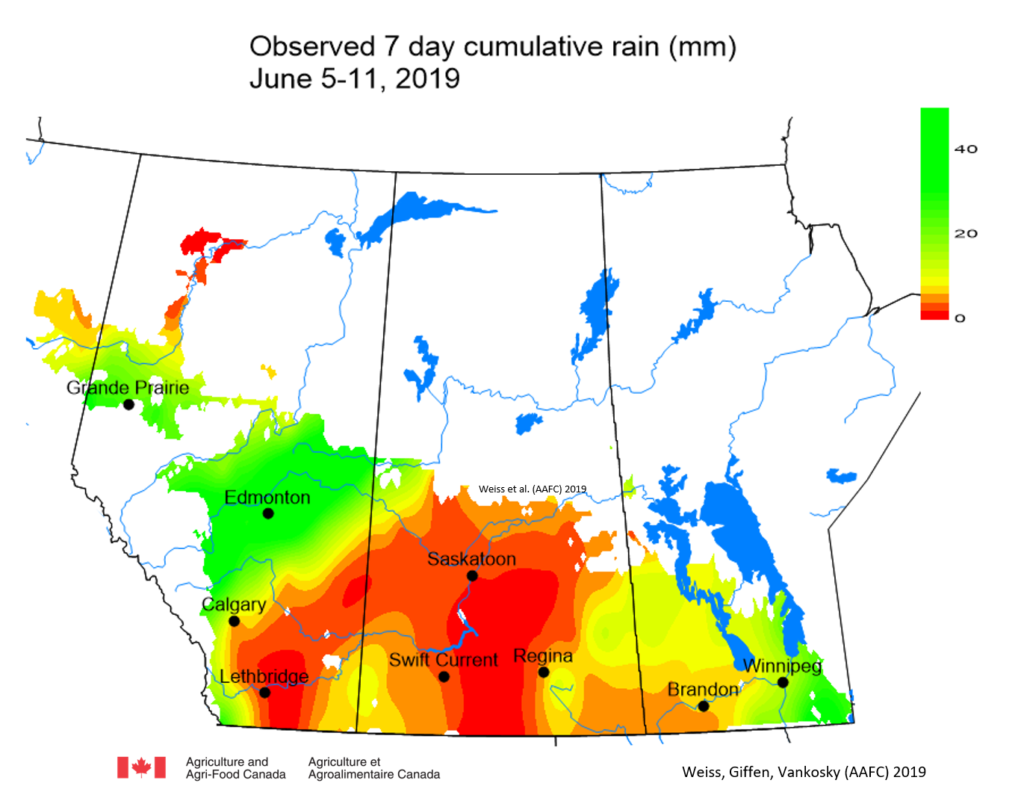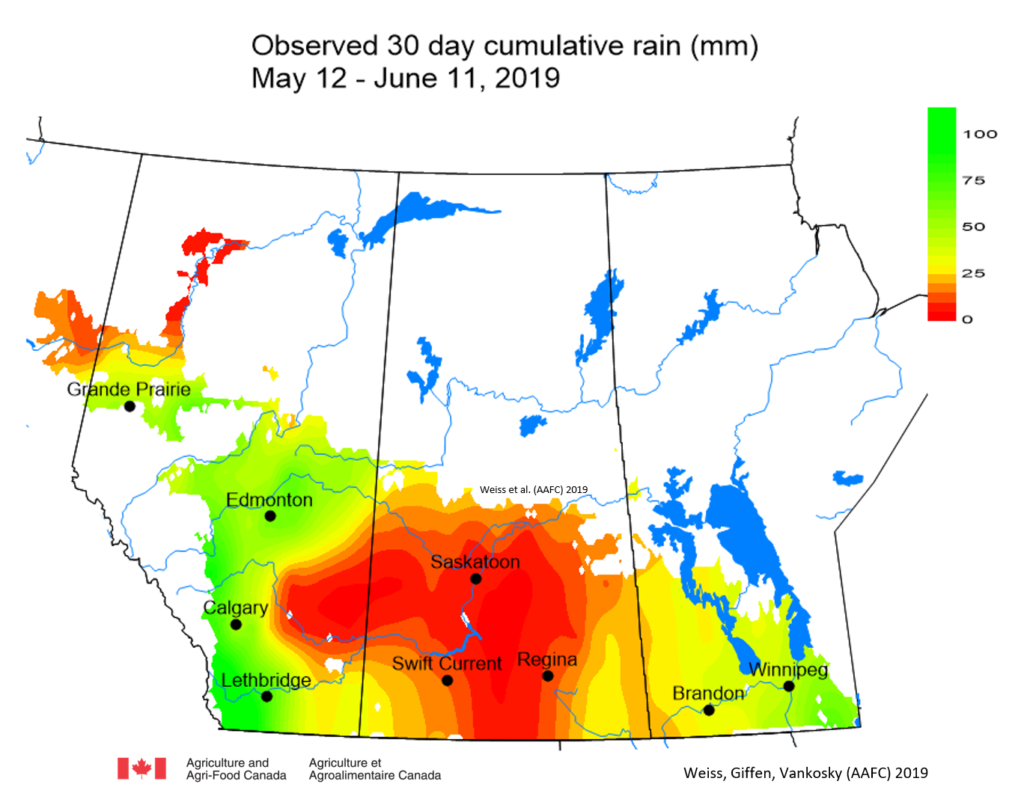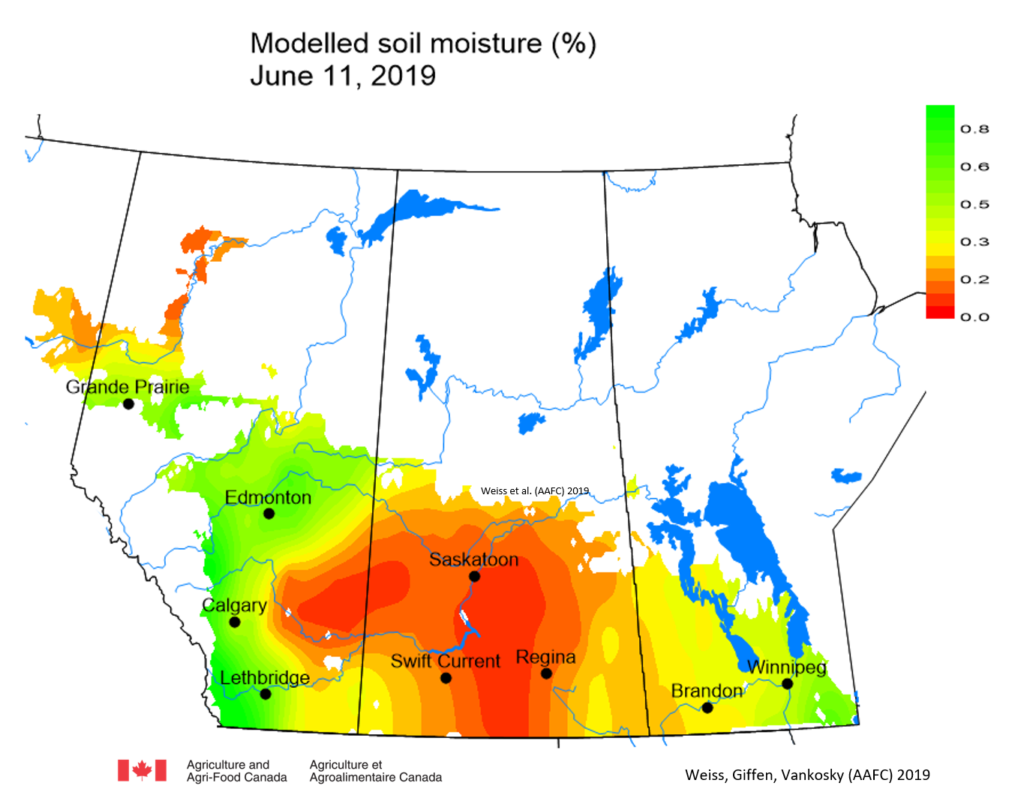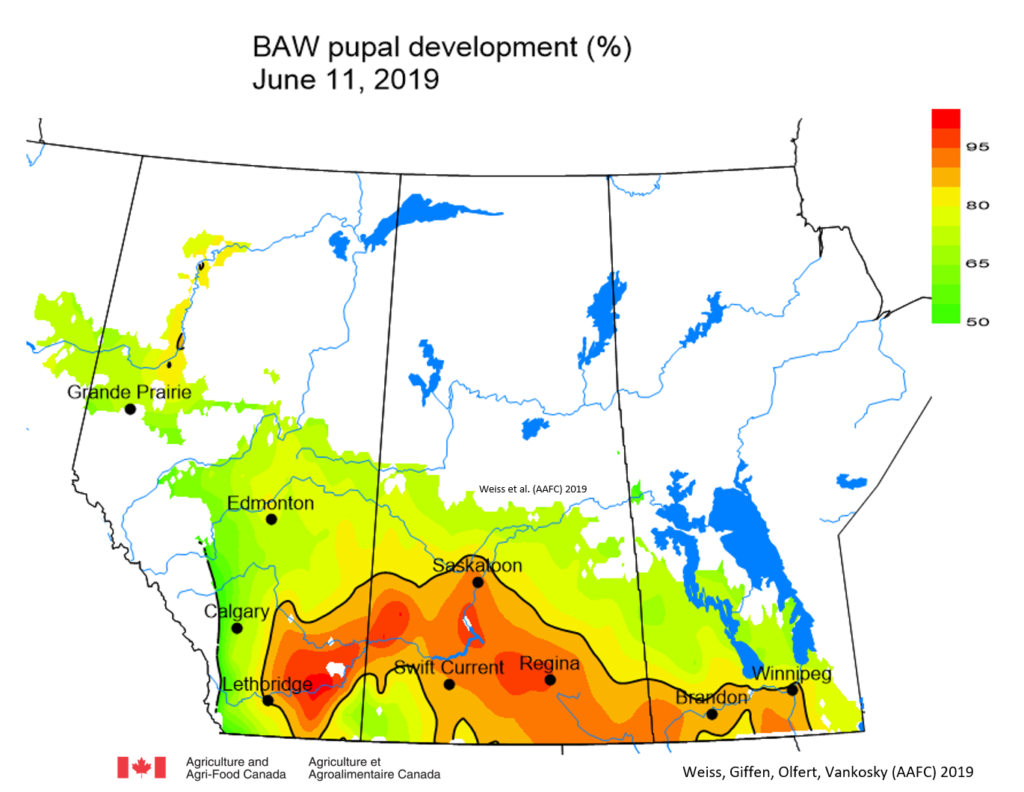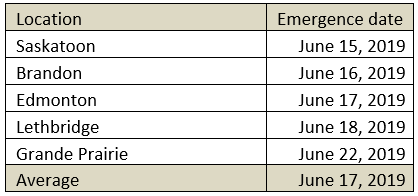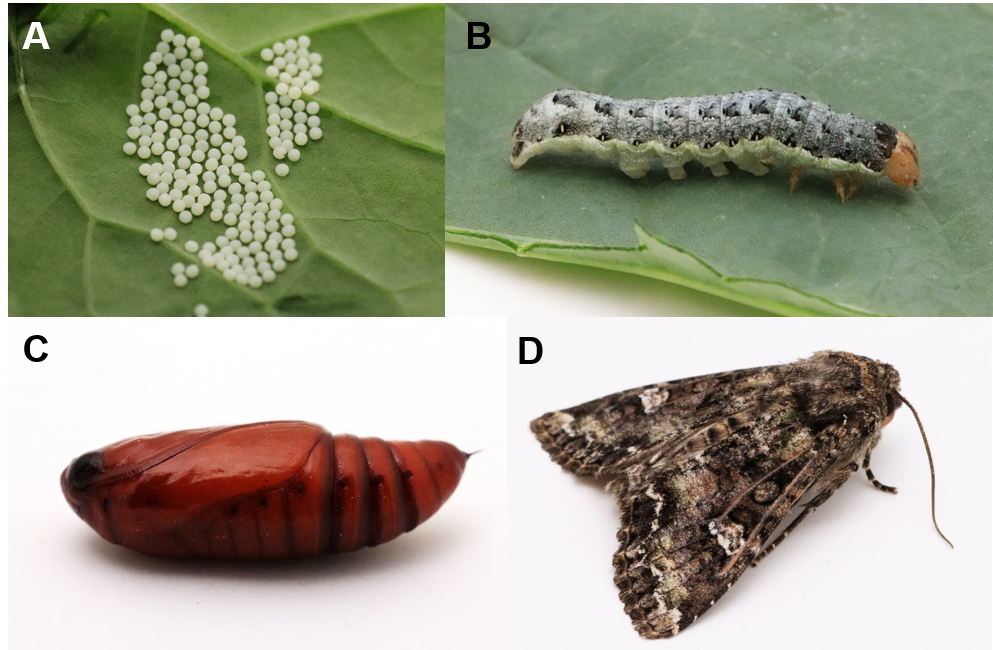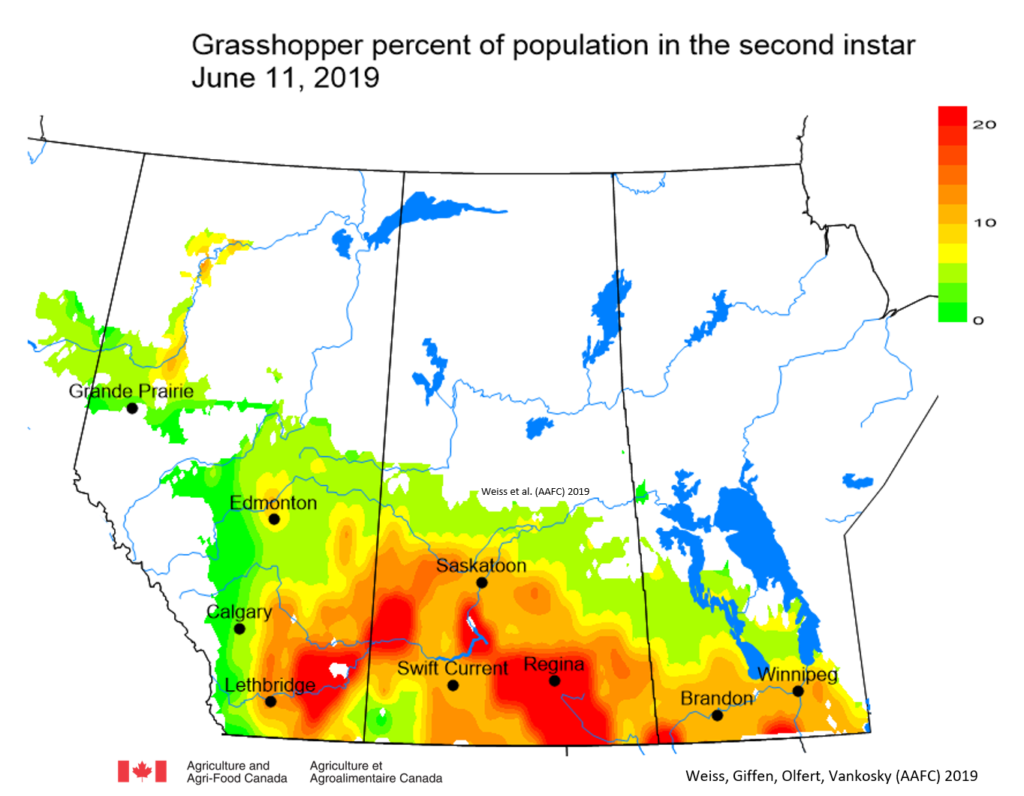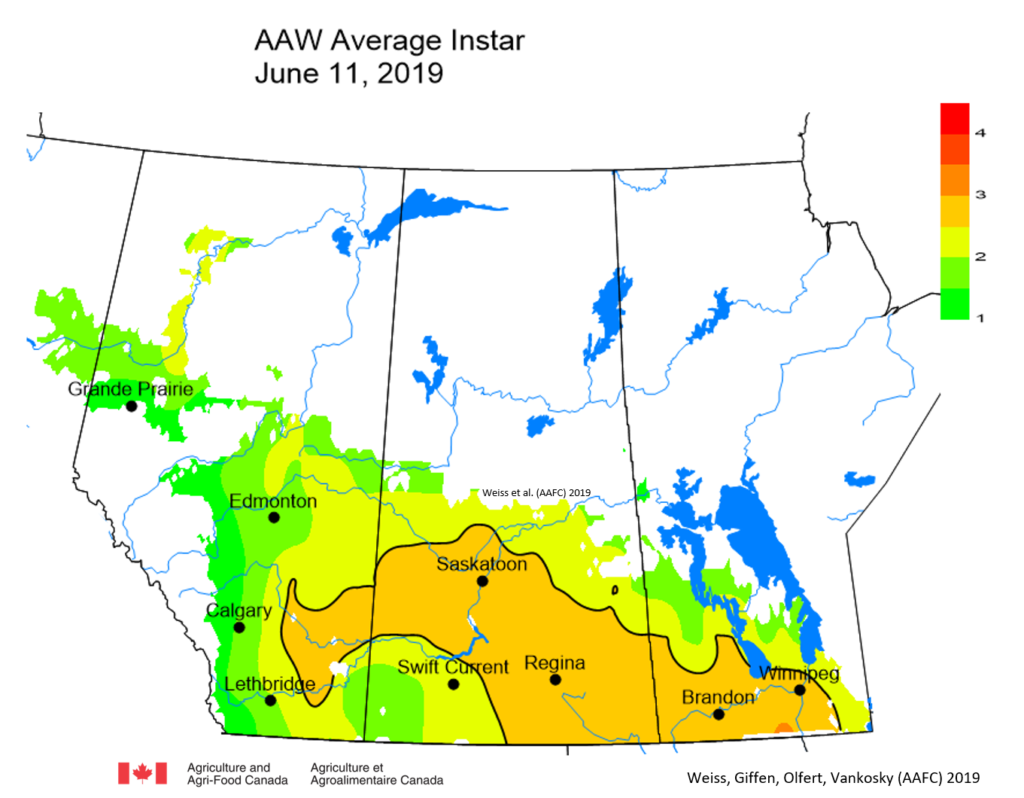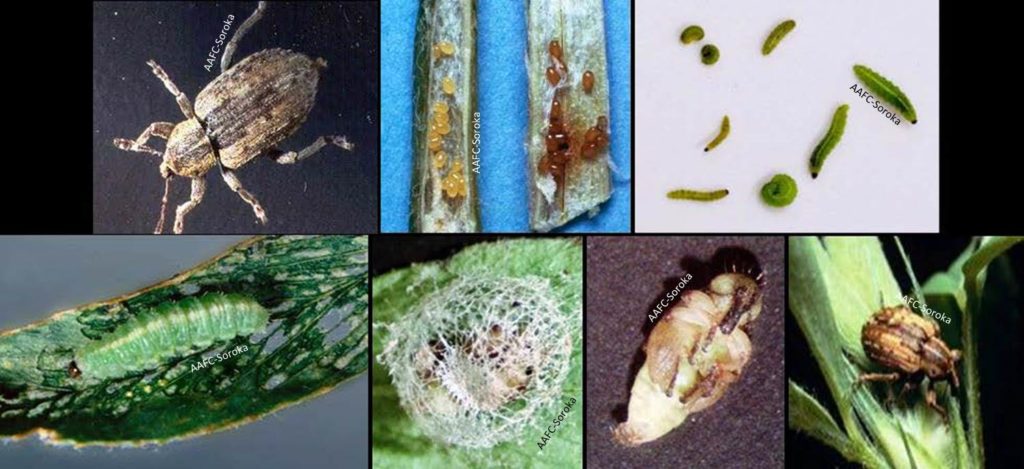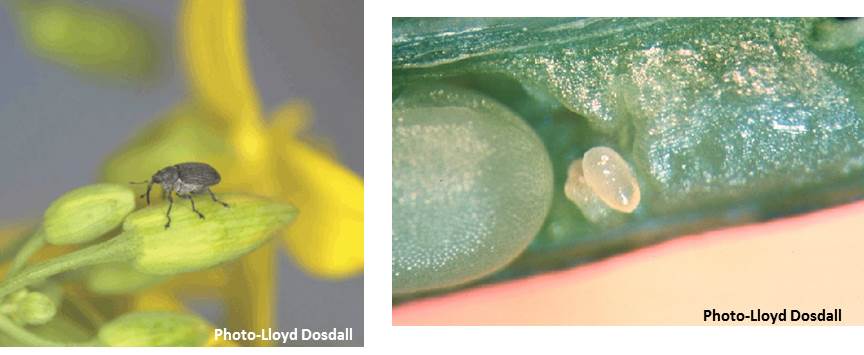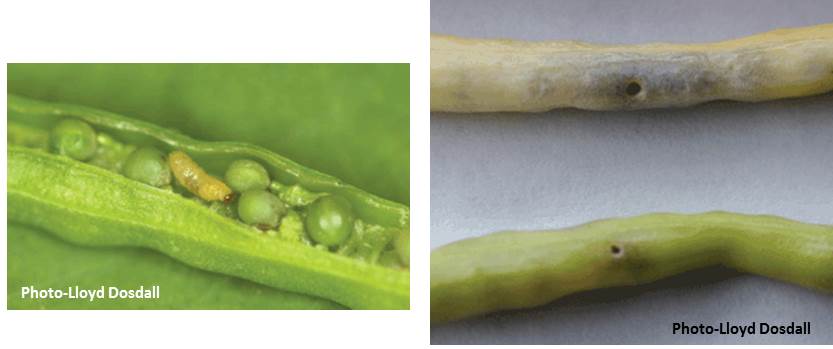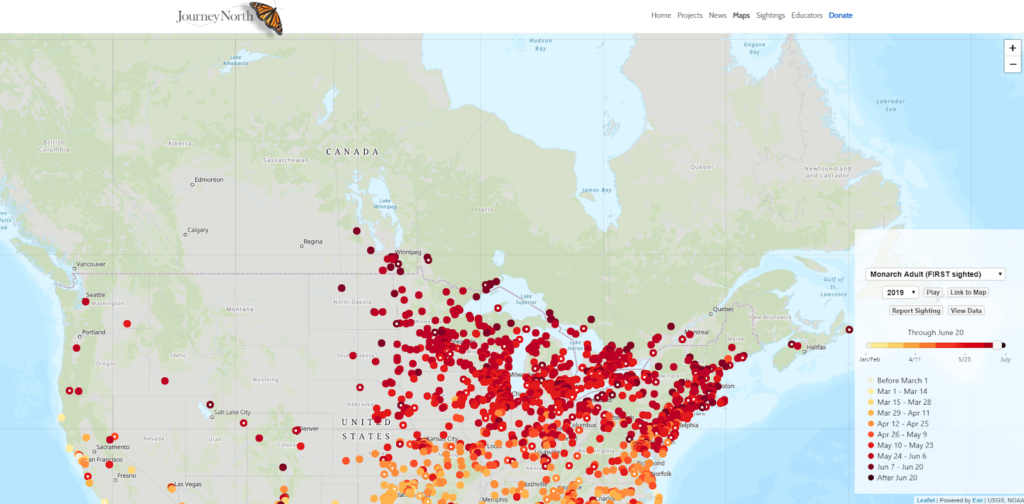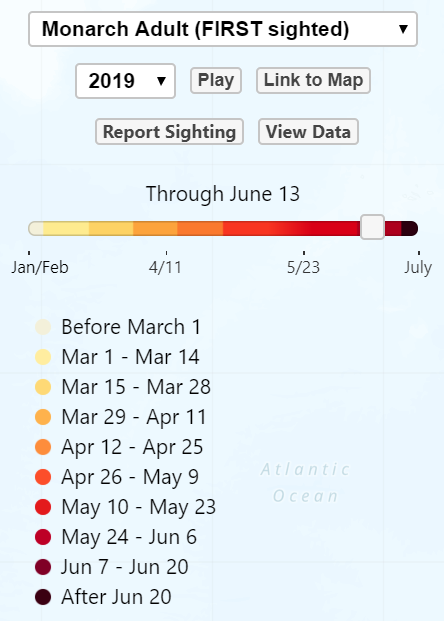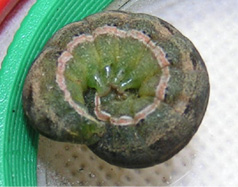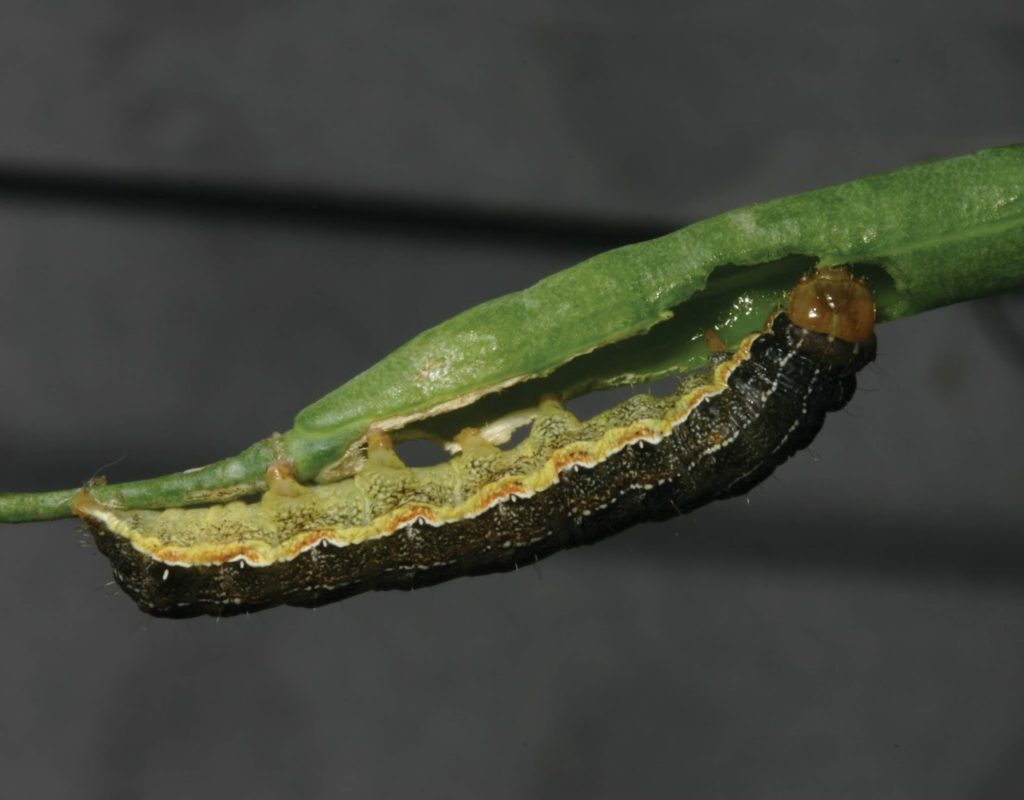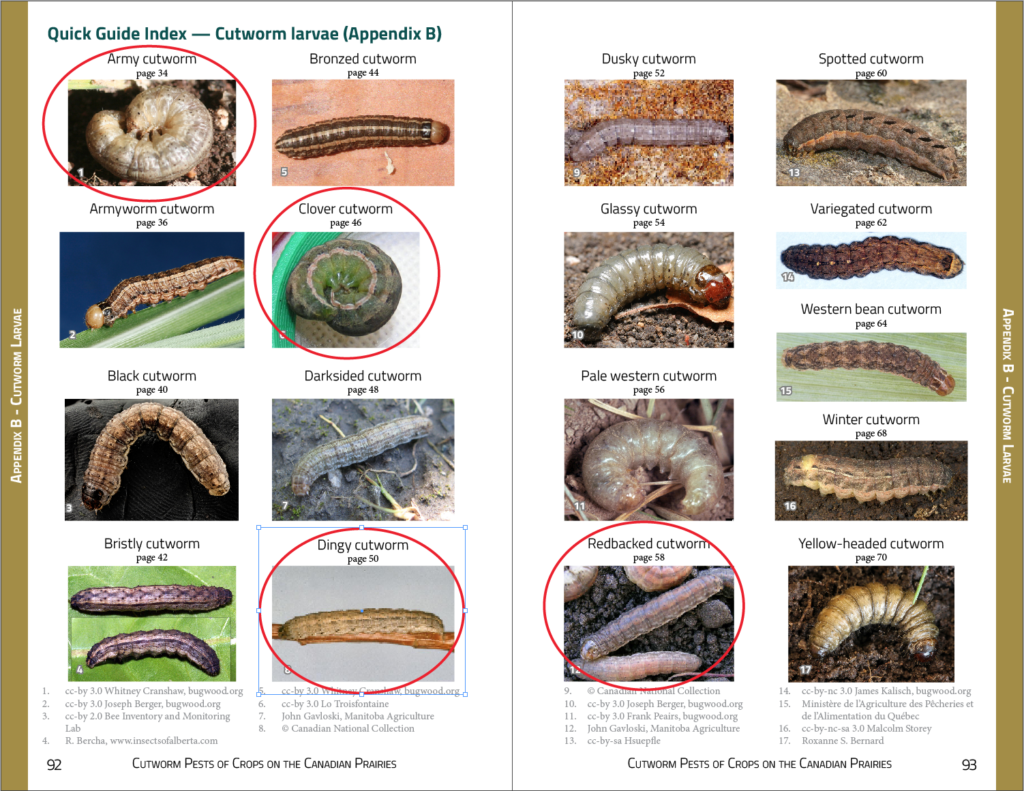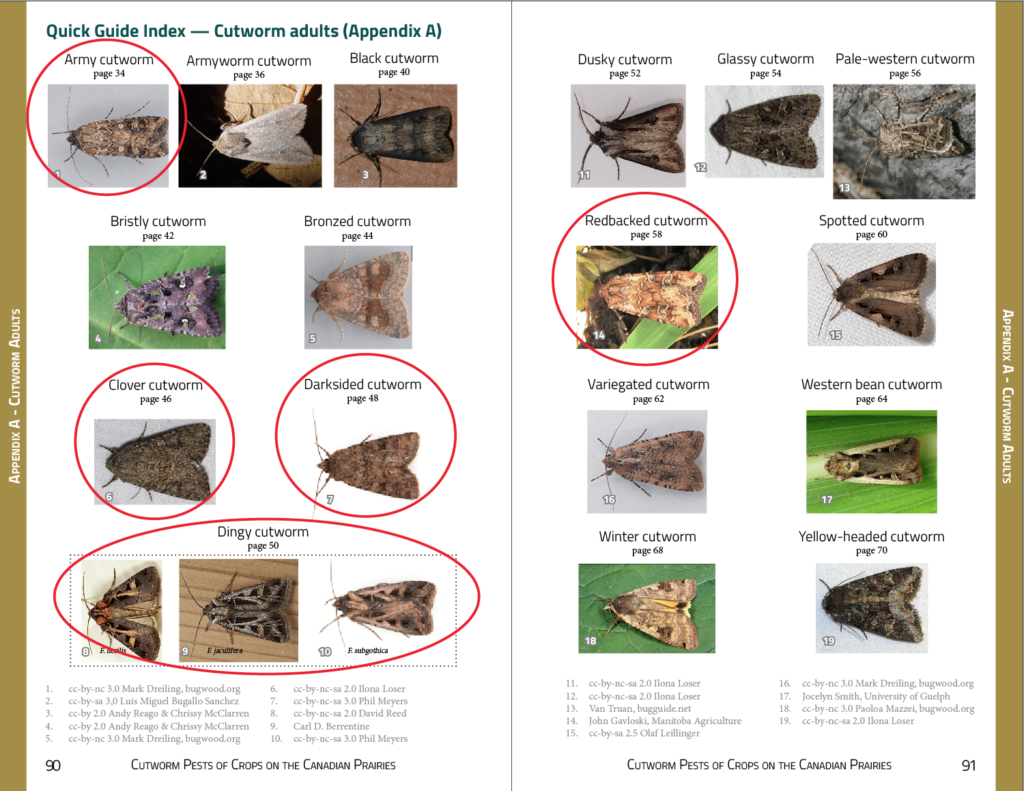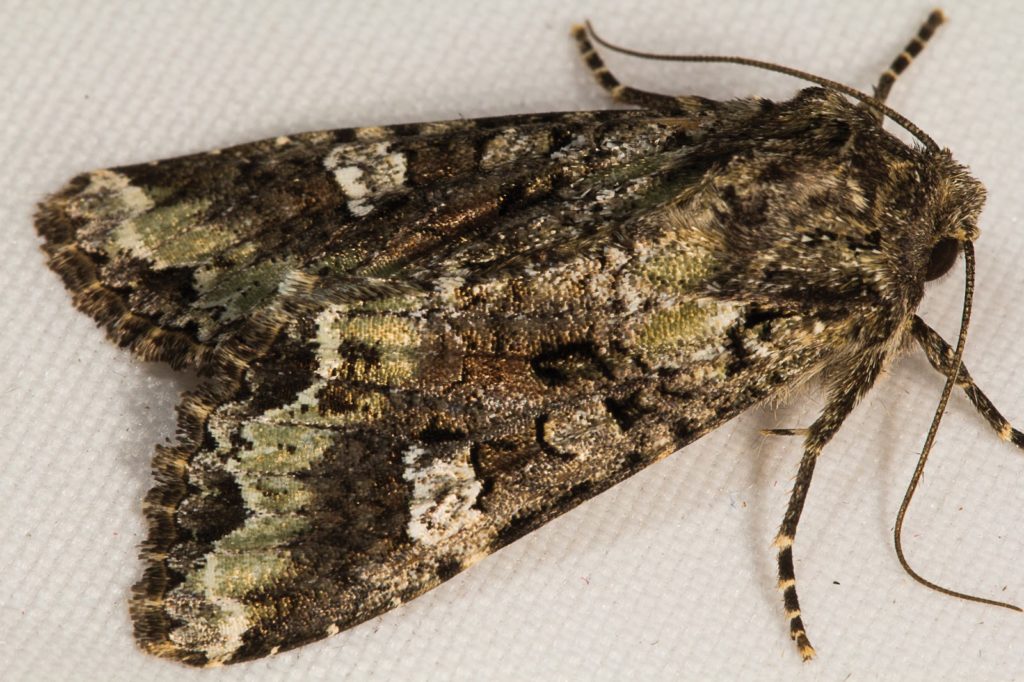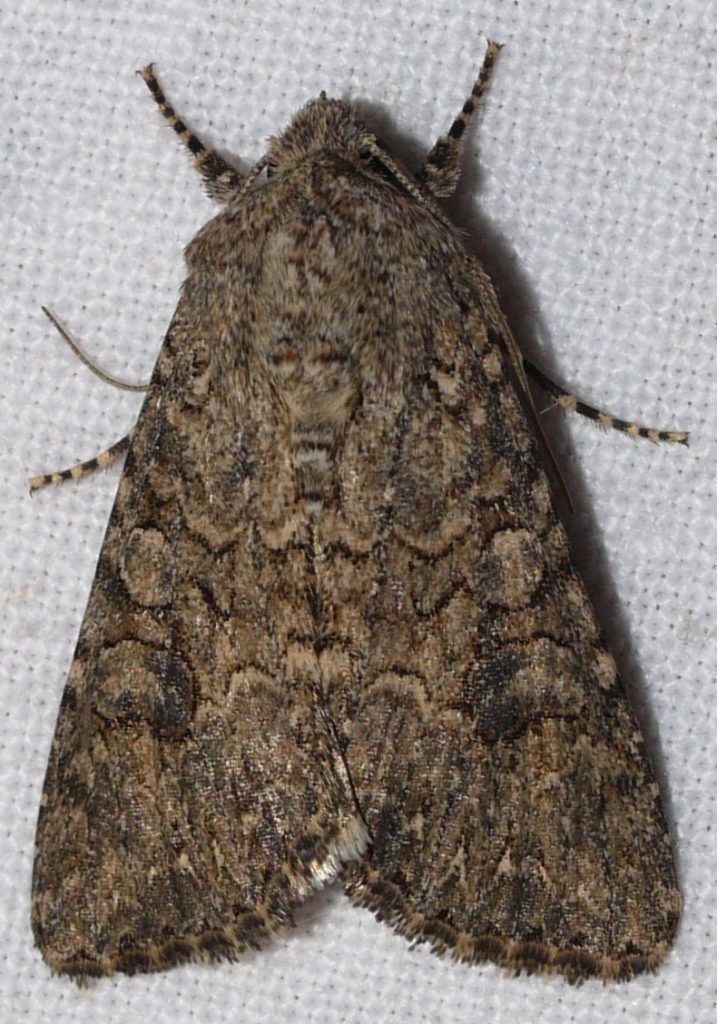The Prairie Crop Disease Monitoring Network (PCDMN) represents the combined effort of our prairie pathologists who work together to support in-field disease management in field crops.
In 2019, the PCDMN will release a series of weekly Cereal Rust Risk Reports throughout May and June. Information related to trajectory events based on forecast and diagnostic wind fields and cereal rust risk is experimental, and is OFFERED TO THE PUBLIC FOR INFORMATIONAL PURPOSES ONLY.
Background: Agriculture and AgriFood Canada (AAFC) and Environment and Climate Change Canada (ECCC) have been working together to study the potential of trajectories for monitoring insect movements since the late 1990s. Trajectory models are used to deliver an early-warning system for the origin and destination of migratory invasive species, such as diamondback moth. In addition, plant pathologists have shown that trajectories can assist with the prediction of plant disease infestations and are also beginning to utilize these same data. An introduction will be presented of efforts to identify wind trajectory events that may bring rust urediniospores into Western Canada from epidemic areas in the central and Pacific northwest (PNW) regions of the USA. Identification of potential events as well as an assessment of epidemic severity from source locations, and prairie weather conditions, will be used to assess the need for prompt targeted crop scouting for at-risk regions of the Canadian Prairies.
This week, two documents are available from the PCDMN:
Summary of wind trajectory and cereal rust risk assessment and the need for in-crop scouting in the Prairie region, June 4-10, 2019:
1. Pacific Northwest – Currently there is limited stripe rust development in the PNW, a moderate-high number of recent wind trajectories from the PNW, relatively dry Prairie weather conditions, and generally early stages of Prairie crop development, especially in spring cereals. Thus, as of June 10, 2019, the risk of stripe rust appearance from the PNW is relatively low and scouting for this disease is not urgent.
2. Texas-Oklahoma corridor –In general, crops are advancing towards maturity, while in many areas of Texas harvesting has been completed, and thus will become less of a source of rust inoculum. There has been a limited number of recent wind trajectories from this area, relatively dry Prairie weather conditions, and generally early stages of Prairie spring crop development. Thus, as of June 10, 2019, the risk of leaf and stripe rust appearance from the Texas-Oklahoma corridor is low and scouting for these diseases is not urgent.
3. Kansas-Nebraska corridor –Leaf and stripe rust development in winter wheat continues in Kansas, although the winter crop is starting to turn colour in some regions. Although rusts have only been recently reported in Nebraska, levels are on the rise, and thus over the next few weeks this region could act as a significant source of rust inoculum for the Prairie region. From June 4-10, 2019 there has been a low-moderate number of wind trajectories from this area. In general, weather conditions have been relatively dry across the Prairies with generally early stages of Prairie crop development depending on the region. Thus, as of June 10, 2019, the risk of leaf and stripe rust appearance from the Kansas-Nebraska corridor is relatively low and scouting for these diseases is not urgent; however, further development of rust in these regions, especially Nebraska, may increase the risk.
4. Where farmers or consultants noticed stripe rust development on winter wheat in the fall of 2018, it is recommended to scout winter wheat fields this spring. Scouting is especially critical where the variety being grown is susceptible to stripe rust. Currently, there are no reports of stripe rust in commercial fields of winter or spring wheat across the Prairie region.
5. Access the full downloadable report.



